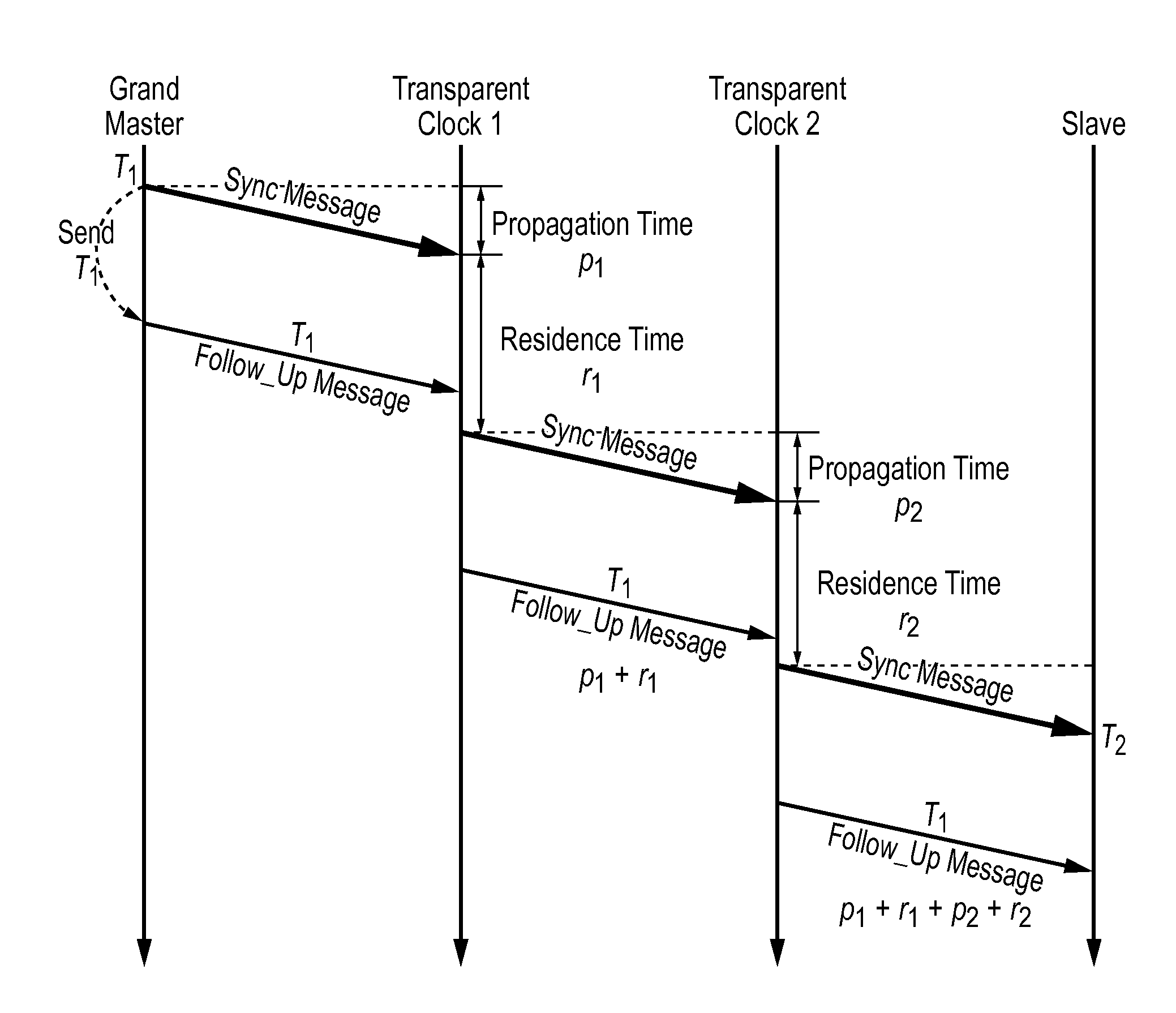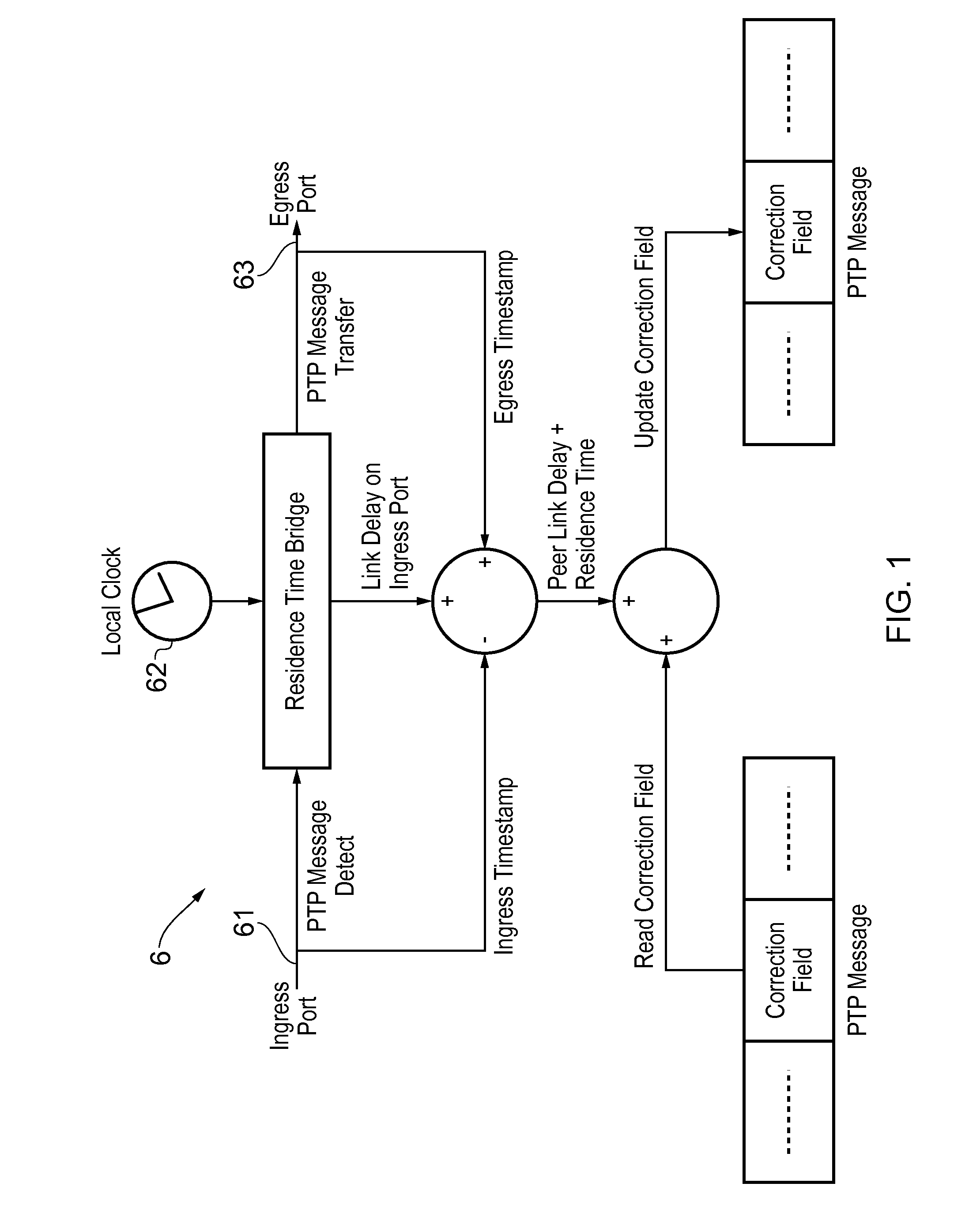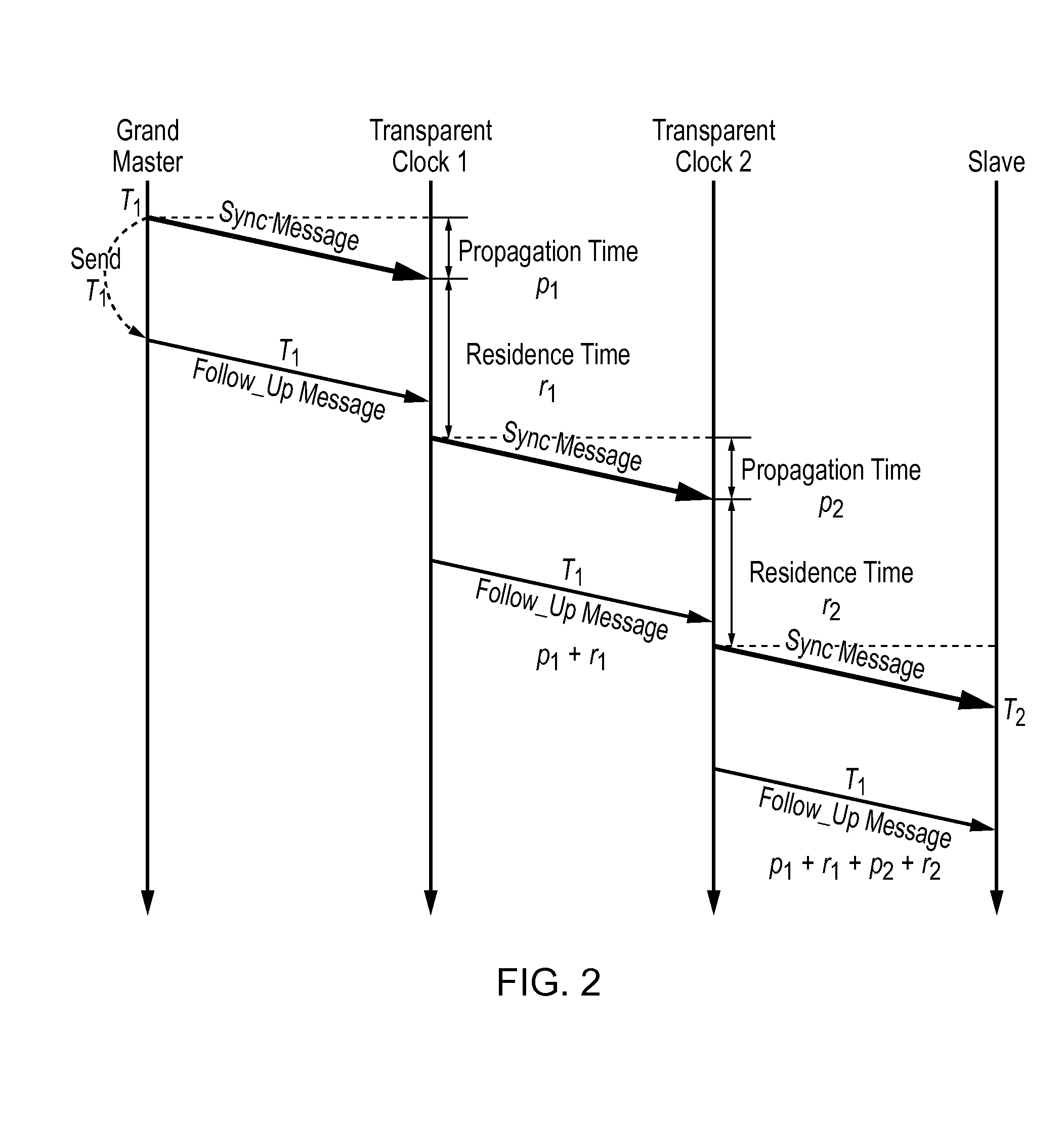Method and devices for time transfer using peer-to-peer transparent clocks
a technology of transparent clocks and time transfer methods, applied in the direction of digital transmission, generating/distributing signals, instruments, etc., can solve problems such as delay asymmetry, packet delay variation (pdv), and time impairmen
- Summary
- Abstract
- Description
- Claims
- Application Information
AI Technical Summary
Benefits of technology
Problems solved by technology
Method used
Image
Examples
Embodiment Construction
[0063]At their broadest, aspects of the present invention provide for methods and devices for estimating skew and offset in a slave device where timing messages from the master device have passed through at least one peer-to-peer transparent clock, which make use of the peer delay estimated by the or each transparent clock
[0064]A first aspect of the present invention provides a method for estimating the skew and offset of a slave clock in a slave device in relation to a master clock in a master device, the slave device and the master device being connected by a network, the method including the steps of: sending timing messages from the master device to the slave device over the network, each timing message passing through at least one peer-to-peer transparent clock; recording timestamps which are the times of the sending and receiving said messages according to the respective clocks; in each transparent clock, estimating the residence time of each message passing through the transp...
PUM
 Login to View More
Login to View More Abstract
Description
Claims
Application Information
 Login to View More
Login to View More - R&D
- Intellectual Property
- Life Sciences
- Materials
- Tech Scout
- Unparalleled Data Quality
- Higher Quality Content
- 60% Fewer Hallucinations
Browse by: Latest US Patents, China's latest patents, Technical Efficacy Thesaurus, Application Domain, Technology Topic, Popular Technical Reports.
© 2025 PatSnap. All rights reserved.Legal|Privacy policy|Modern Slavery Act Transparency Statement|Sitemap|About US| Contact US: help@patsnap.com



